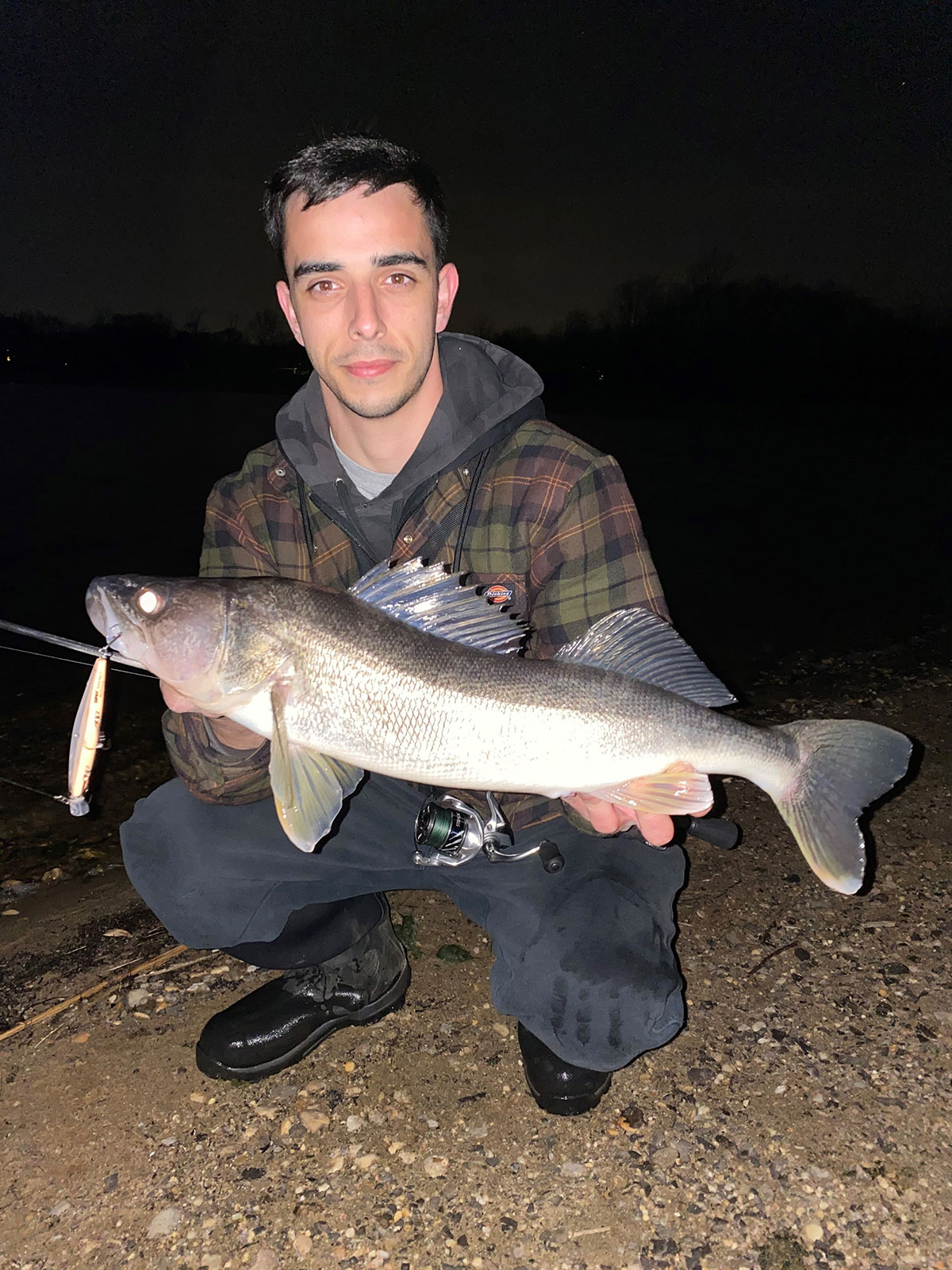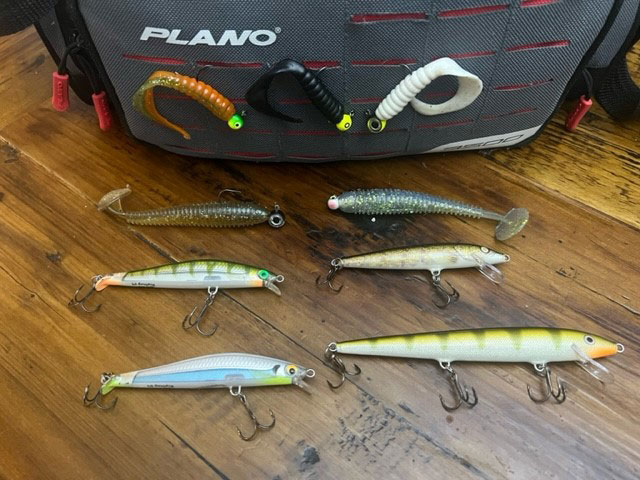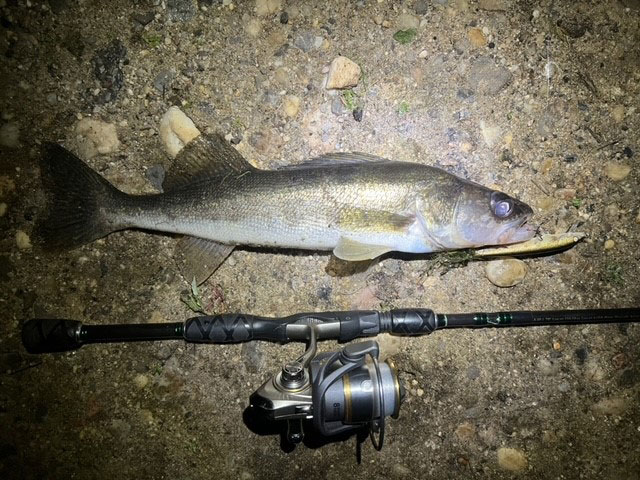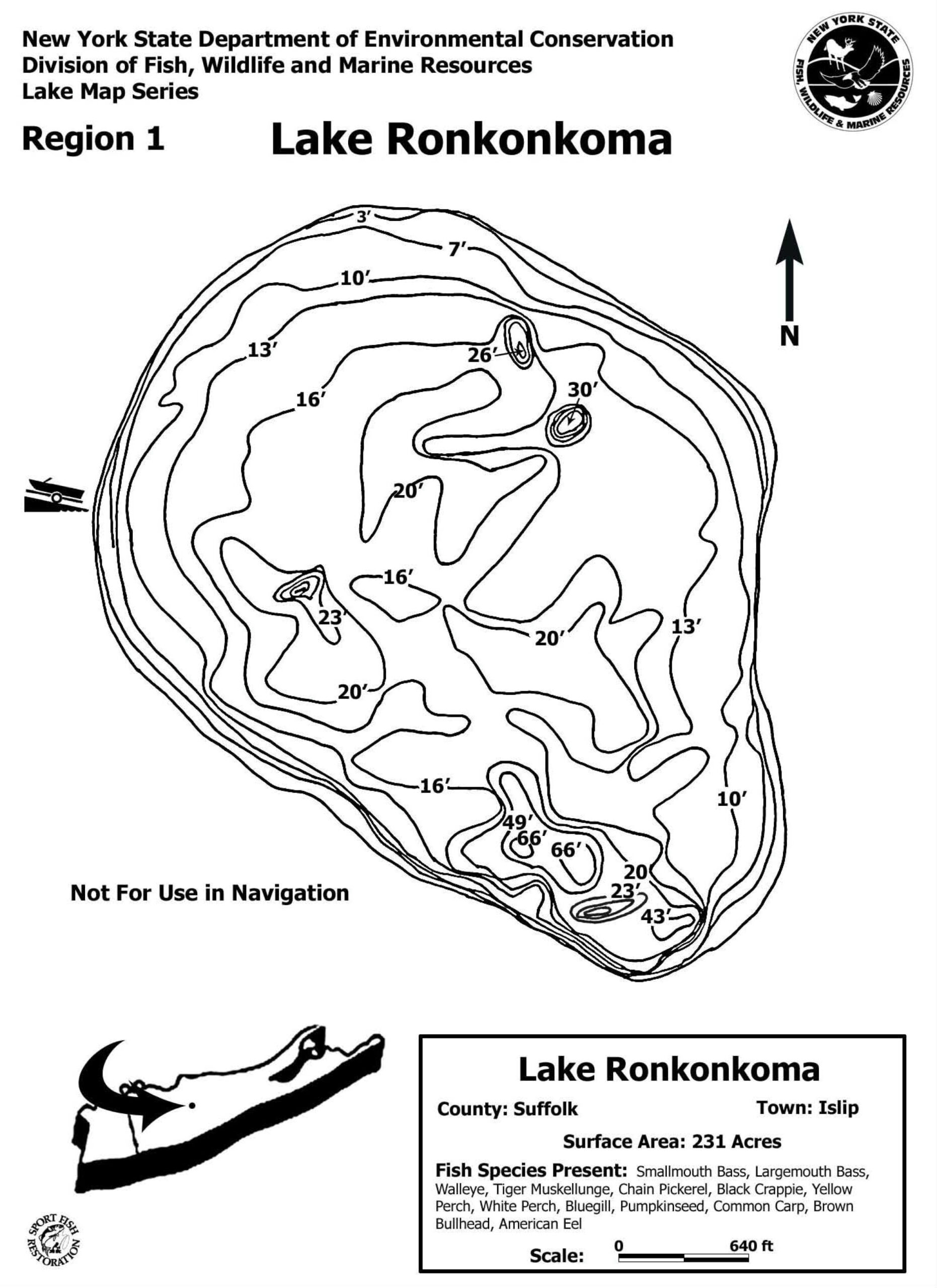
Making the most of the “off-peak” season in Ronkonkoma.
As I walked carefully toward the water’s edge, I could see a disturbance caused by fish feeding under the light of a nearly full moon. I casted my jig well past the fish to not alert them of my presence. As my lure neared the feeding fish, it didn’t take long before my jig was stopped dead in its tracks. This scenario could easily be mistaken for a surfcasting session chasing back bay schoolies, but not only are the above fish not stripers, but the location is also not a bay or ocean. The fish are walleye, and the location is Lake Ronkonkoma.
The History
In the mid-90s, the NYSDEC began stocking fingerling walleye in both Lake Ronkonkoma and Fort Pond. The fish were introduced to try and restore the once prominent bass fisheries that have been diminished due to the overabundance of both white and yellow perch. By the way, it seems to have worked well; I’ll regularly catch smallies 2 pounds and over on these trips. For myself, walleye fishing began as a way to kill some time each morning before catching the 5:42 a.m. train to Penn Station. But soon became an obsession, as I began waking up earlier and earlier to cash in on this incredibly productive fishery. Following a conversation with a close friend who fishes for walleye upstate, I felt confident that I had enough information to get me started.
Walleye are close relatives of yellow perch, though they grow much larger. I’ve caught walleye in Lake Ronkonkoma over 27 inches. Unlike perch, walleye are equipped with large mouths, sporting some pretty serious teeth, designed to catch and hold their prey. Walleye aren’t regarded as great fighting fish, but they hit hard and give more of a steady, constant pull. Their eyes are very large and are extremely sensitive to light, which is why many people will fish for them in deep water during daylight hours. Due to their exceptional vision, walleye are very successful nighttime feeders and move well within the range of shore fishermen during the night and other low-light conditions, making them a very good target for those anglers who prefer to fish between sunset and sunrise, particularly from shore.

Minimalistic Tackle Choices
Due to the fact that my time is usually limited, I try to keep my tackle choices simple and the amount I carry to a minimum. For rod and reel, I use a 7-foot medium light spinning rod paired with a 2000 to 3000-series reel. My reel is spooled with 8 to 10-pound test fluorocarbon and finished off with a medium Gamakatsu G-finesse tournament snap to accommodate the sometimes frequent lure changes. I carry a single Plano bag that holds three trays and a couple of extra bags of assorted soft plastics.
I could probably get by just fine with four total lures, provided I don’t lose or break any off. The first two are 3-½-inch Rapala Rip Stops in pearl and yellow perch. These plugs swim well even on a slow retrieve and stay relatively shallow. The next two are both jigs; first, a 1/8th-ounce white jig head with a 4-inch white Mister Twister grub. The next is a 1/8th-ounce chartreuse jig head with a 4-inch black Mister Twister grub. Being a fisherman, I could never carry so few baits, so I’ll pack a variety of swimbaits in the 3 to 5-inch range. As well as a variety of soft plastics, two other styles that I’ve had success with are the Bass Pro Speed Shad and the 4-inch Zoom Dead Ringer. I fish both the Speed Shad and Dead Ringer on 1/8th-ounce jigheads of various colors.

Breaking Down Location
Having fished Lake Ronkonkoma hard for the past year in search of walleye, I’ve settled on a few productive locations and times. The most significant similarity is the proximity to deeper water, as well as a distinct weed bed transitioning from the deeper water to the shallower flats. I will also fish subtle points and rockpiles located around the lake in search of actively feeding fish. Don’t just stick to the main spots, though. A lot of the lake will hold walleye after dark as they come to the shallows when the sun goes down.
As for seasons, spring and fall are definitely the most productive seasons, with the spring holding the edge due to higher water levels and less weed growth. Definitely keep the winter months on the radar as well to put that cabin fever at ease. These fish will feed during the cold months of the year and will put a bend in the rod when not much else is around.

Simple Presentation
My presentation is really quite basic; I’ll fan cast an area with a slow straight retrieve. There is no need to bounce your jig or add sharp, jerky movements to the swimbaits. The only time I will impart some action during my retrieve is if I know there are fish feeding in an area, but they won’t hit. In these situations, I will add pauses in my retrieve, not quick jerks or snaps, just a simple one or two-second pause, then resume your slow retrieve.
Nights can get cold on this lake after dark during the months mentioned. Neoprene waders will extend your outings, and some wool fingerless gloves will keep your hands working properly. Don’t forget that surf fishing light you would normally use in the salt. Use it sparingly and turn your back to the water if you’re turning it on. The bright light could spook fish sitting right in front of you. Oh, and remember a hot beverage in an insulated mug for those very chilly nights to warm your insides and keep you fishing.
If you’ve ever thought about exploring a new fishery or don’t have ideal surfcasting conditions and would like to salvage a night of fishing or even just pass some time this winter. Grab your freshwater setup, a couple of jigs, and jerk baits, and head to Lake Ronkonkoma. You may be pleasantly surprised. Good luck and fish safe.


